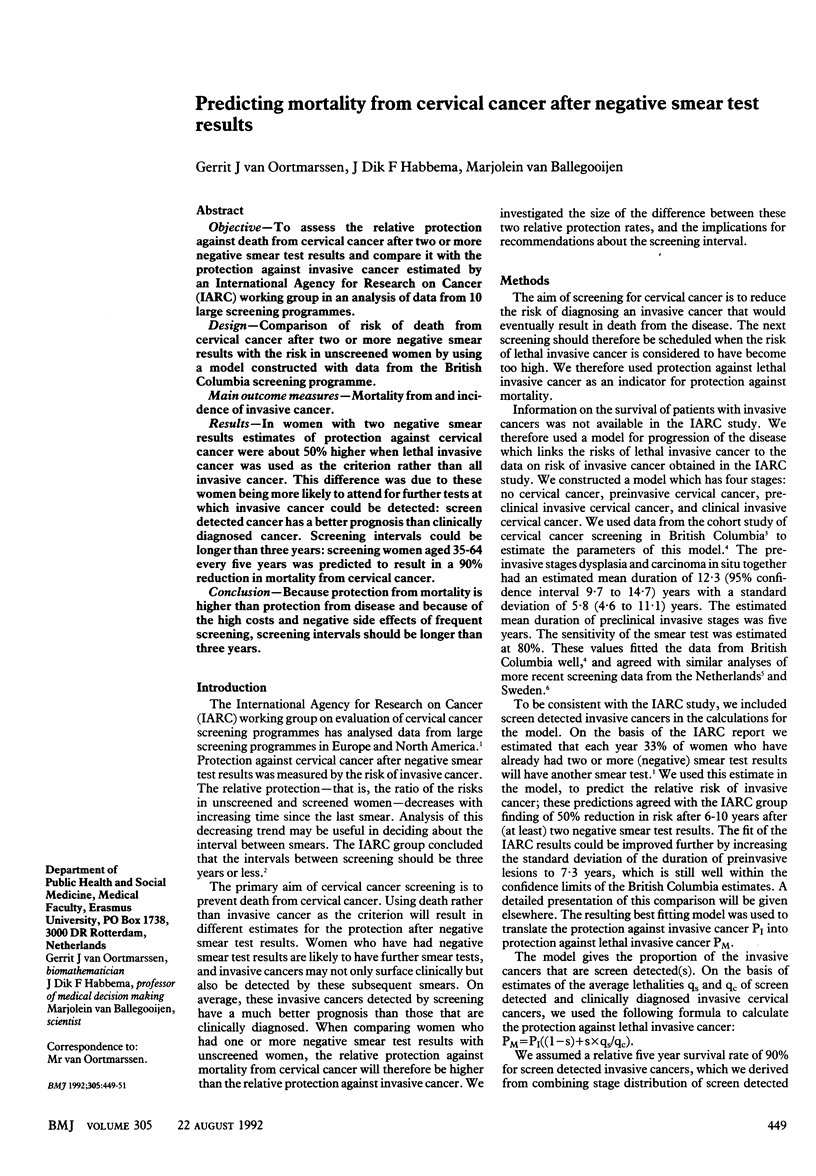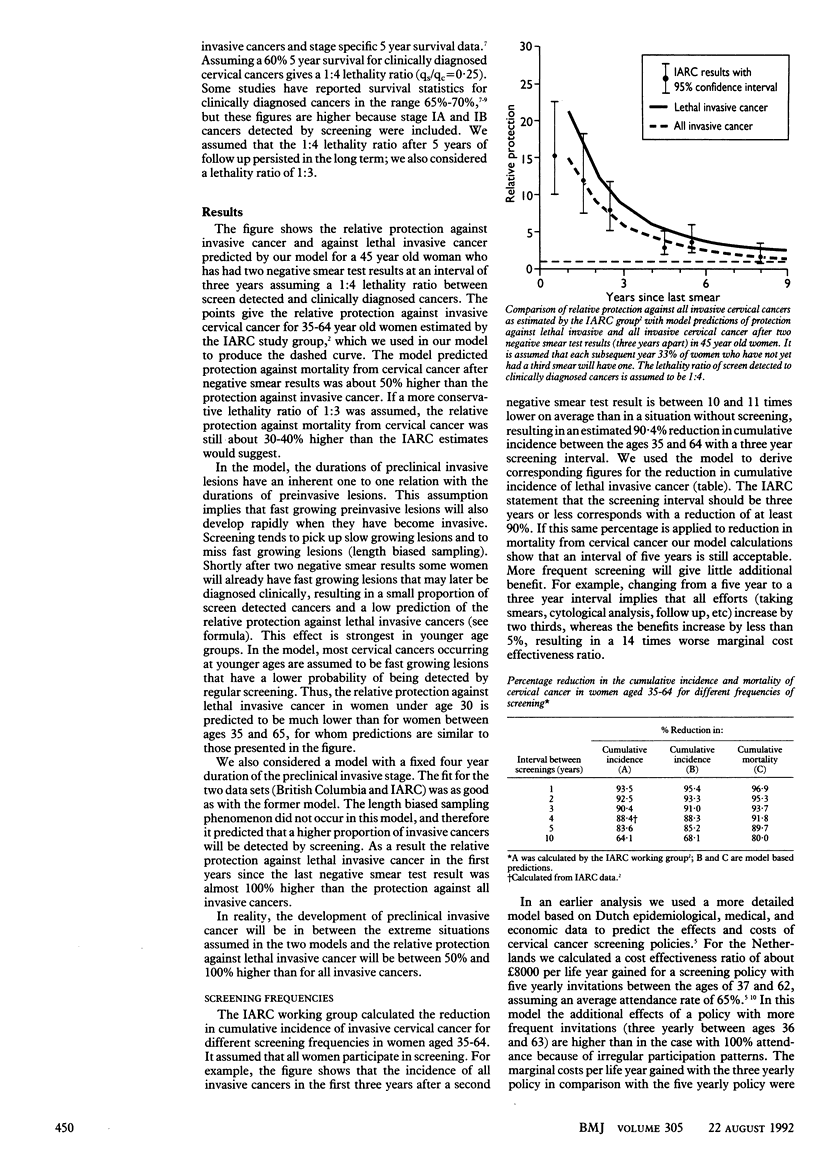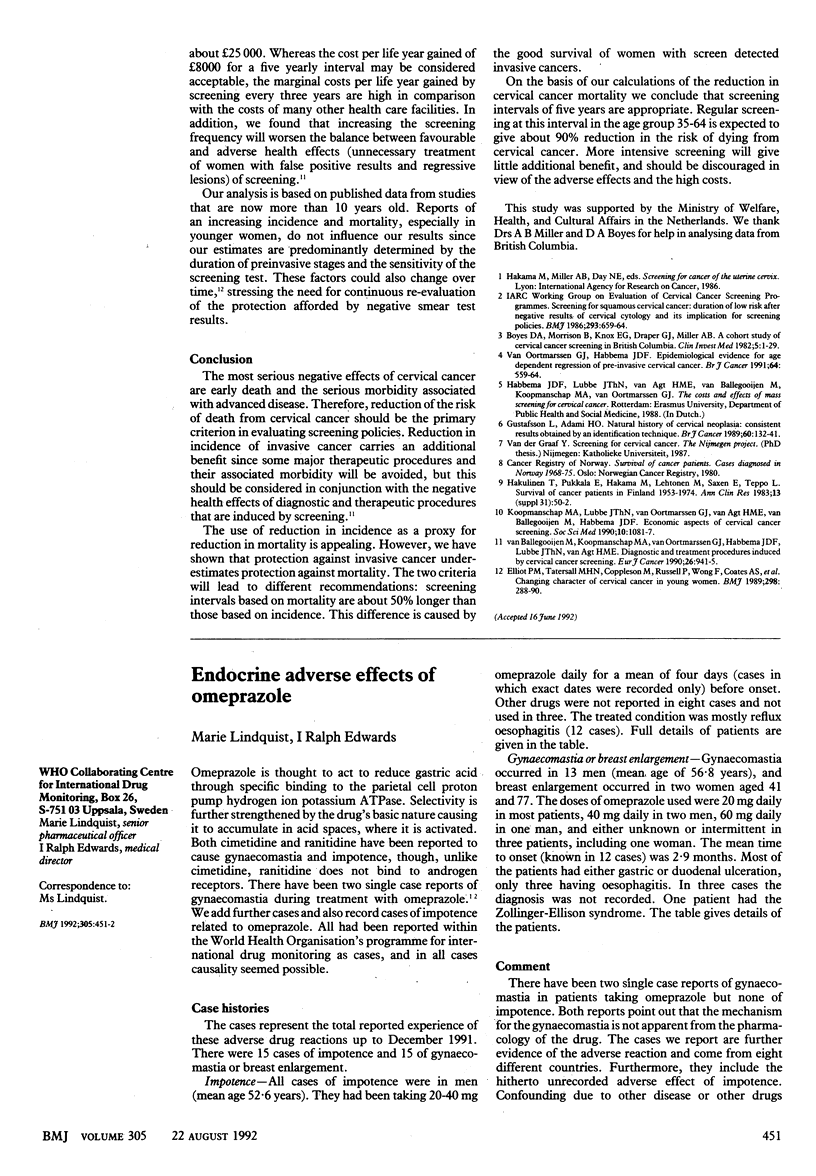Abstract
OBJECTIVE--To assess the relative protection against death from cervical cancer after two or more negative smear test results and compare it with the protection against invasive cancer estimated by an International Agency for Research on Cancer (IARC) working group in an analysis of data from 10 large screening programmes. DESIGN--Comparison of risk of death from cervical cancer after two or more negative smear results with the risk in unscreened women by using a model constructed with data from the British Columbia screening programme. MAIN OUTCOME MEASURES--Mortality from and incidence of invasive cancer. RESULTS--In women with two negative smear results estimates of protection against cervical cancer were about 50% higher when lethal invasive cancer was used as the criterion rather than all invasive cancer. This difference was due to these women being more likely to attend for further tests at which invasive cancer could be detected: screen detected cancer has a better prognosis than clinically diagnosed cancer. Screening intervals could be longer than three years: screening women aged 35-64 every five years was predicted to result in a 90% reduction in mortality from cervical cancer. CONCLUSION--Because protection from mortality is higher than protection from disease and because of the high costs and negative side effects of frequent screening, screening intervals should be longer than three years.
Full text
PDF


Selected References
These references are in PubMed. This may not be the complete list of references from this article.
- Boyes D. A., Morrison B., Knox E. G., Draper G. J., Miller A. B. A cohort study of cervical cancer screening in British Columbia. Clin Invest Med. 1982;5(1):1–29. [PubMed] [Google Scholar]
- Elliott P. M., Tattersall M. H., Coppleson M., Russell P., Wong F., Coates A. S., Solomon H. J., Bannatyne P. M., Atkinson K. H., Murray J. C. Changing character of cervical cancer in young women. BMJ. 1989 Feb 4;298(6669):288–290. doi: 10.1136/bmj.298.6669.288. [DOI] [PMC free article] [PubMed] [Google Scholar]
- Gustafsson L., Adami H. O. Natural history of cervical neoplasia: consistent results obtained by an identification technique. Br J Cancer. 1989 Jul;60(1):132–141. doi: 10.1038/bjc.1989.236. [DOI] [PMC free article] [PubMed] [Google Scholar]
- Koopmanschap M. A., Lubbe K. T., van Oortmarssen G. J., van Agt H. M., van Ballegooijen M., Habbema J. K. Economic aspects of cervical cancer screening. Soc Sci Med. 1990;30(10):1081–1087. doi: 10.1016/0277-9536(90)90294-3. [DOI] [PubMed] [Google Scholar]
- van Ballegooijen M., Koopmanschap M. A., van Oortmarssen G. J., Habbema J. D., Lubbe K. T., van Agt H. M. Diagnostic and treatment procedures induced by cervical cancer screening. Eur J Cancer. 1990;26(9):941–945. doi: 10.1016/0277-5379(90)90615-z. [DOI] [PubMed] [Google Scholar]
- van Oortmarssen G. J., Habbema J. D. Epidemiological evidence for age-dependent regression of pre-invasive cervical cancer. Br J Cancer. 1991 Sep;64(3):559–565. doi: 10.1038/bjc.1991.350. [DOI] [PMC free article] [PubMed] [Google Scholar]


